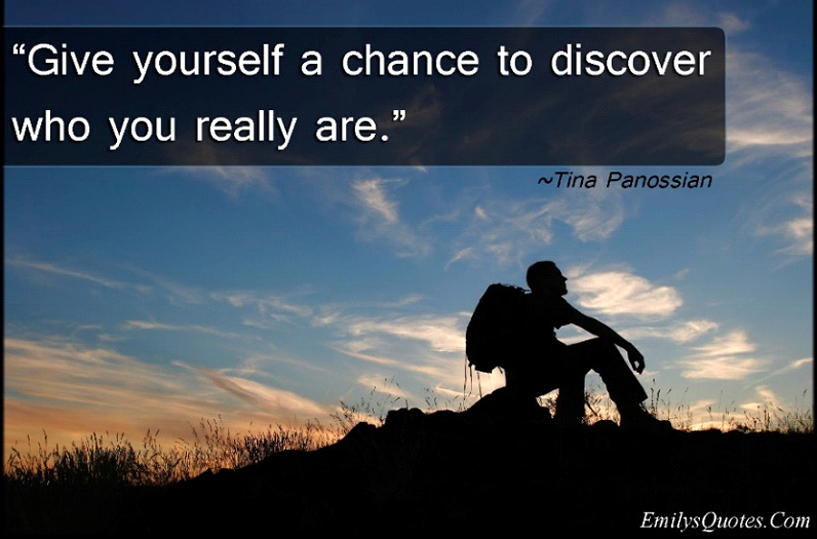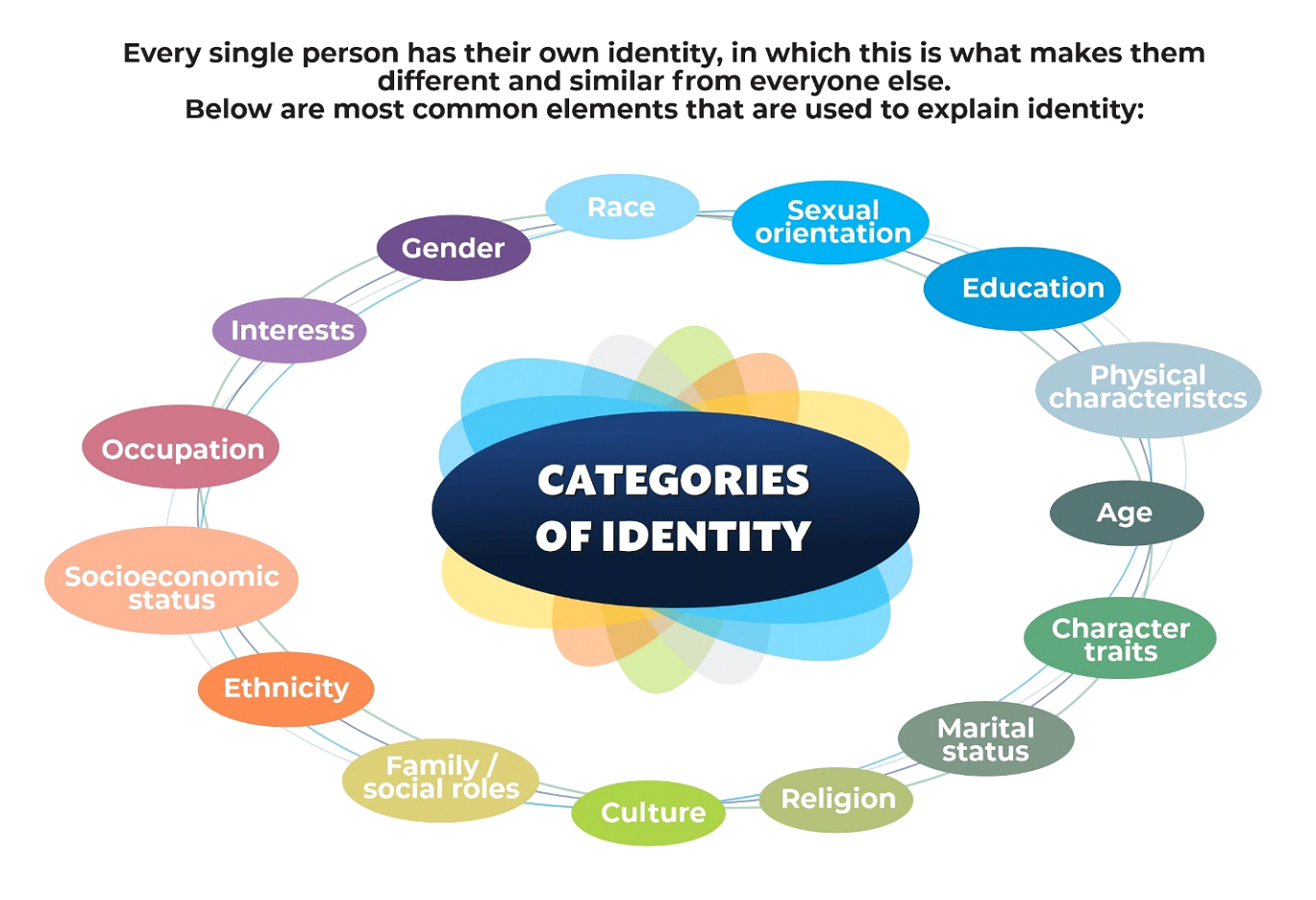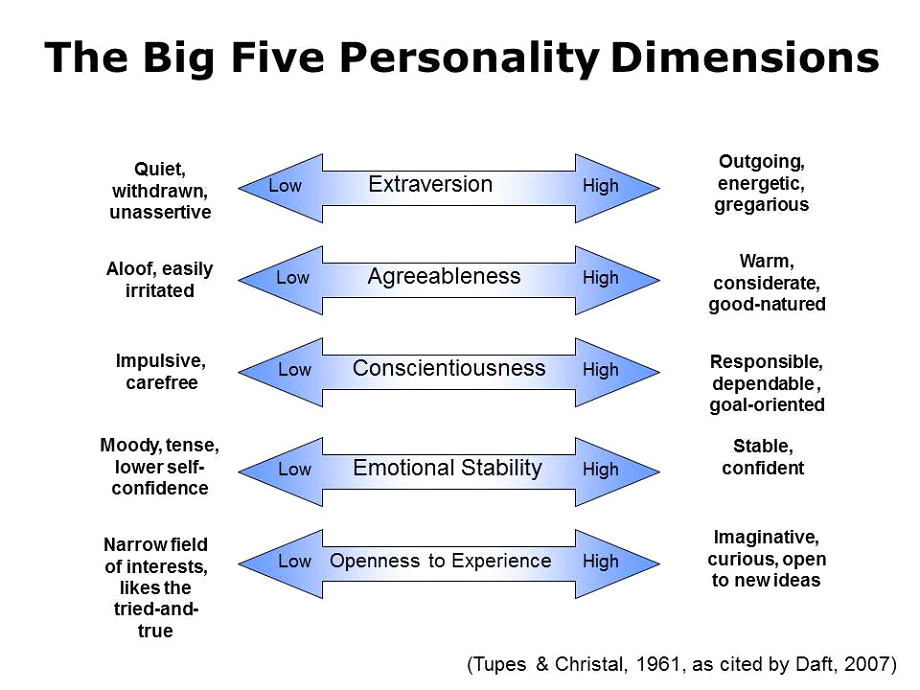Who are you?
Identity matters. Addressing the issue of identity in a group with many identities.

Every person has their own identity that is created by the life roles that person is taking, their personal characteristics, their value system and the person’s beliefs. Our identity can greatly affect how we think, feel and act. Our identities in a group can also affect the way we interact, share, and learn both with positive and negative effects. It depends a lot on how the issue of identity is addressed.
Introduction
A friend of mine, who is a great philosopher, told me that according to him, the hardest two questions to answer are: “Who are you?” and “How are you?”. Usually, people are used to giving short and simple answers based on the person they are answering to, or the situation. But, how many of us have sincerely answered those questions? Both of these questions open up a topic about understanding our own identity and being able to express it verbally, physically, and emotionally. Let’s see how identity relates to the training context, as an example, when there are 20 – 30 people in the room. If we look at these people from a “helicopter view” they all seem similar – like a simple group of people. How does our perception change if we get inside the group of people and just observe them for a few minutes? We will see different clothes, gestures, occupations and different stories they share, even without talking. Every person in the group has their own personality and identity (later the difference will be explained) and very often the participants in the training do not realize that the differences in their perceptions, opinions, and attitudes are based on who they are and how they feel. It is one of the trainer’s skills to address the issue of identity when working with a group of learners.
Understanding identity in the training context
What is identity?
Before reading the next paragraph, please take a piece of paper and spend 3 minutes reflecting and answering the questions: “Who are you?” Write everything that comes to your mind.

(Source: https://www.aspire.org/2018/08/16/who-are-you/)
I hope that you have written some words or phrases. Here comes the next task. Take the same piece of paper and spend a few minutes answering the following question: “WHO YOU REALLY ARE?”

(Source: https://emilysquotes.com/give-yourself-a-chance-to-discover-who-you-really-are/)
What do you think about this task?
What were your first answers? Were they representing the roles at your job or the relationships you have? How many words represented belonging to a specific group of people?
How did the answer to the second question differ? Are there any answers that represented your values and beliefs?
Here are some definitions of the word identity:
- an individual’s sense of self-defined by a set of physical, psychological, and interpersonal characteristics that is not wholly shared with any other person and a range of affiliations (e.g., ethnicity) and social roles;
the characteristics of a person that - distinguish him/her from others;
Every single person has their own identity, in which this is what makes them different and similar to everyone else. Below are the most common elements that are used to explain identity:

Why identity matter?
I will give an example of my work with a group of youngsters who come from social risk groups. They have parents who are alcohol, and drug addicts, and they have experienced emotional and physical abuse. Many times, the same youngsters are the ones who are bullying other youngsters and have antisocial behaviour. There is 1,5 years long youth rehabilitation program that these youngsters take part in and this is where I had the possibility to work with them in the long term and regularly. What we try to do to consciously in our program is to change the perception of what these youngsters have about themselves, to change some aspects of identity. Let s take one youngster as an example. His name is Daniel, he is 15 years old, he is in the 5th grade at school (for 3 years he did not pass to another class), he has an older sister and a younger brother, his father left the family when he was very young, his mother has problems with alcohol and has strong mood swings, they all live in a one-room apartment in an old building without the heating. He has a few criminal offences and there is a risk of him going to a colony of imprisonment. He spends most of his time on the streets together with other boys in similar situations. Certainly, these aspects of identity are shaping the way Daniel thinks and feels about himself, unconsciously they also determine his behaviour. After months of individual work and youth group activities, I started to notice some changes in Daniel. It seemed that he had found out some new aspects of his identity – that he is a boy who likes snowboarding and would love to do it as a hobby, he is kind, generous and supportive, and he has friends who are with a similar background as him and also friends who influence him more positively, he is a 5th-grade student with the ability to learn, put an extra effort, ask for help. After 3 years of being a 5th-grade student, he finally got to the 6th grade. Realizing new aspects of identity was crucial for Daniel though it did not happen in one meeting or two, it was a process of several months.

(Source: https://www.123rf.com/stock-photo/mirror_reflection.html?sti=mgsdspxl2hvs1lk2m1|)
Identity matters because it greatly shapes the way we think of ourselves, how we define who we are in comparison to other people, how we create relationships with people who have similar or different aspects of identity.
This video is a great example that demonstrates how different we can be based on certain aspects of identity and how similar we can be based on some other ones. In the training context, it can be very obvious that people make informal subgroups based on the specific aspects of identity. They might even think “I don’t want to be with him/her in the group because he is younger because he/she is from a different country because he/she has a different professional background”. From a psychological perspective, it is very understandable that people connect to the ones who seem to be similar. However, this is where the learning and growth can happen – firstly, to be aware of your own identity and how it affects your thinking and acting, secondly, to be aware that there are many other identities around and it takes tolerance, understanding, empathy to accept them, third – to get to know and connect with people who seem to be different.
Identity and personality
Many times, “personality” is mixed up with the word “identity” or the other way around.
Personality is something you were born with. It is a matter of nature (genetics) and nurture (development), where personality defines how you think (cognition), how you feel (emotions) and how you act (behaviour).
Identity is who we believe we are or social groups that we represent. Often social identities are created through our beliefs and attitudes, so they are constructed later in our developmental stages, and they are multidimensional. It is how a person identifies himself/herself in the human world and different social out-groups/in-groups.
Research shows that there is a strong link between personality and identity. In one study based on a sample of 2,092 college students, a sense of identity was found to be significantly related to the personality traits (Agreeableness, Conscientiousness, Emotional Stability, Extraversion, and Openness). It was suggested that personality traits may be influencing a sense of identity. (Source)
Therefore, it is useful for a trainer to be aware of five personality traits, notice them in participants and see their relatedness to identity.
The Big Five Personality model
A great, scientifically proven model, that explains personality is the Big Five Personality model. It also uncovers many aspects of identity and helps to understand the group of people in the training session better. This model can also support a trainer in addressing the issue of identity to a group of learners – by explaining different dimensions and how they can affect group processes.
Today, many researchers have come to the conclusion that there are five core personality traits – extraversion, agreeableness, openness to experiences, conscientiousness, and neuroticism (also sometimes called emotional stability). It is important to note that each of the five personality factors represents a range between two extremes as can be seen in the model below.

Extraversion – how much a person is outgoing, sociable, talkative, and comfortable meeting and talking to people. The extraversion dimension is characterized by excitability, sociability, talkativeness, assertiveness, and high amounts of emotional expressiveness. Someone who scores high on this trait is generally seen as being more assertive, outgoing, and generally talkative. Others see a person who scores high on this trait as being sociable — someone who actually thrives in social situations. Extroverts tend to feel comfortable expressing emotions appropriately and making their opinion heard. Extrovert people might tend to express their identity more openly and loudly in a group so that everyone is aware of who they are. Introvert people could hide some aspects of their identity or tell about them only if they are asked to.
Agreeableness – how much a person puts others’ interests and needs ahead of their own. It is a trait that describes a person’s overall kindness, affection levels, trust, and a sense of altruism. A person who scores high on this trait is someone comfortable with being kind and friendly to others, it is also an important part of his/her identity – to be good to others.
Someone who scores low on this trait is seen as being more manipulative and generally less friendly to others. They may also be seen as someone who is more competitive and less cooperative. Typically, they would not see it as a part of their identity, they would even deny it.
Conscientiousness – how goal-directed, persistent, and organized a person is. A high level of conscientiousness includes high levels of thoughtfulness, good impulse control, and goal-directed behaviours. Highly conscientious people tend to be organized and mindful of details. They plan ahead, think about how their behaviour affects others, and are mindful of deadlines. People who score low on conscientiousness have more difficulty with staying organized and focused on a goal. They tend to be messier and dislike structure and schedules. They don’t always appreciate or care how their behaviour affects others. People with a higher level of conscientiousness are more aware of the identity and its various aspects, however, people with a lower level of conscientiousness are not fully aware of it and how it affects their thinking, behaving. They might even compare their identity as something higher, more valuable.
Emotional stability (sometimes this dimension is called neuroticism) – how sensitive a person is to stress and negative emotional triggers. The dimension is about a person’s ability to withstand stress. People with positive emotional stability tend to be calm, self-confident and secure. Those with high negative scores tend to be nervous, anxious, insecure. People with a higher level of emotional stability like to reflect and understand themselves, their identity. On the contrary, people with a lower level of emotional stability might get anxious and nervous when thinking of themselves or some aspects of their identity.
Openness to experience – how open a person is to new ideas and experiences. The openness to experience dimensions addresses one’s range of interests and fascination with novelty. A person who scores high on this trait typically has a broad range of interests and may enjoy traveling, learning about other cultures, and trying out new experiences. They also see identity as something that can change over time. People who score low on this trait prefer to stick with what they know and don’t enjoy learning or being creative. They are uncomfortable with change and like to stick close to home. They generally struggle with creative activities or abstract thinking. They also feel that their identity is fixed and cannot change over time.
If you want to check your own results in a personality test, here is the free test: https://www.truity.com/test/big-five-personality-test
How to address the issue of identity?
⦁ have some ‘’get to know each other’’ activities, group building and reflections that include the aspects of identity;
⦁ if the group is very diverse, have a discussion on the topic: “How our identities can support or challenge learning in the group?” and “What are the things to take to be taken into account?” These questions could be a part of the process when creating principles or ground rules for training;
⦁ address the issue of identity when heated discussions start, and you will notice that it is due to aspects of identity. You can ask questions like: “How much is your opinion influenced by the identity you have / roles you take on in your life/ experiences you have had / value system that you have?” Sometimes it is good to mention that there is no right or wrong answer, there are just different perceptions. You can also ask: “What would a 5 years old child say about it?” “What would successful entrepreneurs say about it?” and “What would a homeless person say about it?”
Exercises / how to apply it in everyday work
Reflection Questions
It’s like everyone tells a story about themselves inside their own head. Always. All the time. That story makes you what you are. We build ourselves out of that story. – Patrick Rothfuss
When I discover who I am, I’ll be free. – Ralph Ellison
In the social jungle of human existence, there are no feelings of being alive without a sense of identity. – Erik Erikson




